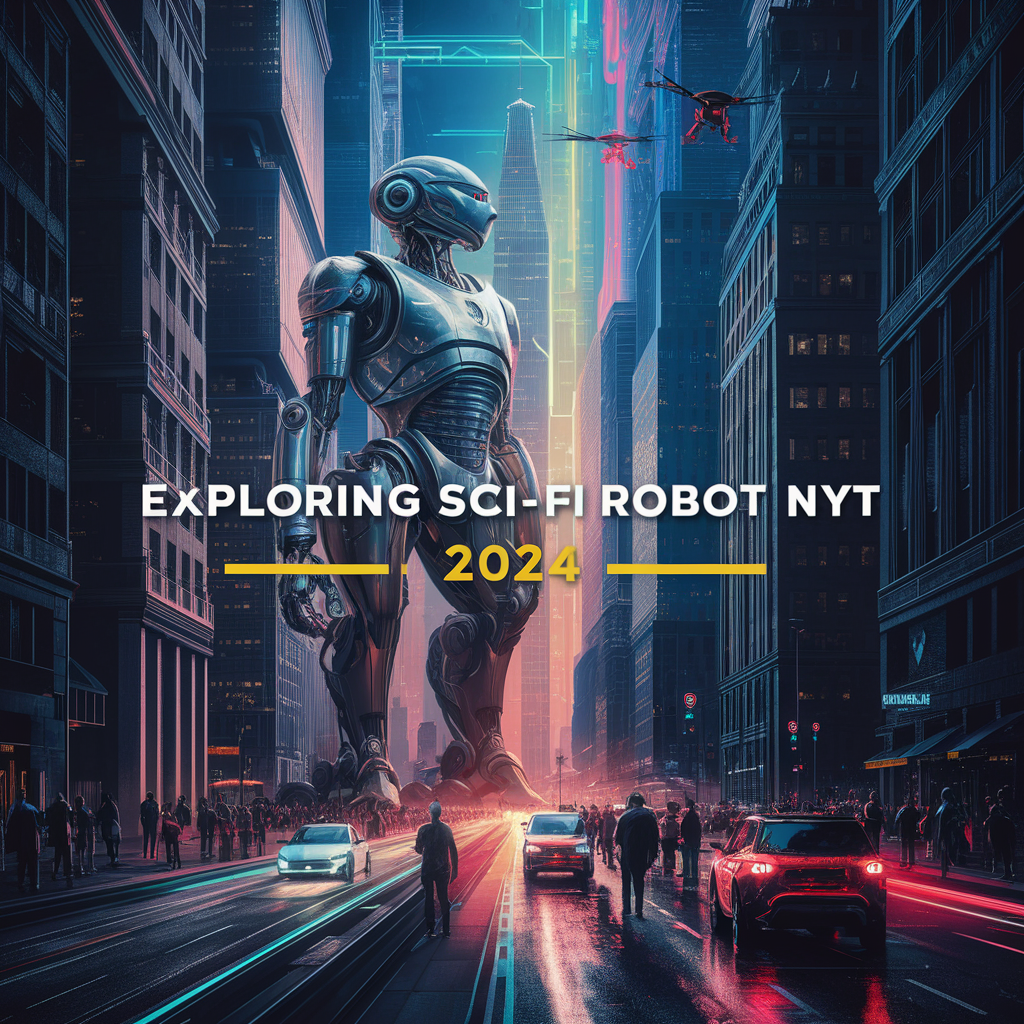You have watched them in movies and on TV, but now sci-fi robots are slowly entering the lives of ordinary people. Consider humanoid assistants, mechanical animals, and autonomous automobiles – things that are now almost here. The trend of development in artificial intelligence and robotics indicates that by 2024 these machines will revolutionize working, commuting, and even leisure activities. Whether you are happy about the prospect of robots or you are scared, they are coming. Read the nine most interesting predictions about how sci-fi robots will alter your life in the next few years. When it comes to artificial intelligence and its related technologies, you would be surprised at the speed at which they go from the realm of the imagination to the real world.
Recasting the First Conceptions of Robots in Sci-Fi
The mid of the twentieth century was characterized by a surge in the use of robots in science fiction. Among the first works in this respect, one can mention Karel Čapek’s “R. U. R. ” play that was written in 1920 and introduced the word “robot” into the world’s literature and depicted artificial beings designed to serve people, but who rebelled against them in the end. This theme of robots subjugating or even killing their creators has now become a cliché in science fiction, which only shows how people’s fears over the uncontrolled advancement of mechanical technology are growing.
Robot Maria from Fritz Lang’s Metropolis
In the movie Metropolis released in 1927 by Fritz Lang, the figure of the robot Maria was introduced, a mechanical man created to manipulate the mob. Maria’s dualism as the sexual seductress and the rebellious figure underlined the possibilities of robots as both helpers and enemies to society.
The Evolving Outcomes of Robotics: From Sci-Fi to Reality
Better and More Advanced Robots
AI and machine learning have contributed to the creation of better and improved robots that are more intelligent than the previous ones. Current systems like IBM’s Watson have shown that AI is capable of achieving human level and in some cases surpassing it. As AI advances, robots will be more and more independent, they will be able to recognize the environment, decide, and even learn.
Robots in the Home: Turning Mundane Activities
Robots are slowly entering into our homes and performing various chores that are part of our daily lives. Such examples include the Roomba which has been cleaning floors for years now, and another new model that can mow lawns, wash windows, and even act as home security guards.
Impact Of Aspirations And Anxieties On Character Choices
The portrayal of robots in movies and television shows is a mirror of society’s fears and dreams in the specific period. For instance, in the “Eliminator” series, humans are threatened by superior machines which raises issues of out-of-control technological development, especially in the area of artificial intelligence. On the other hand, movies such as “I, Robot” deal with the matters of trust and the struggle between people and their creations.
On the more positive side, movies like “Big Hero 6” depict robots as friendly, caring beings that improve people’s quality of life, which is a positive vision of the future that people have when it comes to technology. The above examples of robots in science fiction show that how robots are imagined depends on the sociocultural contexts.
Impact Of Automation On the Economy
The Nature of many Routine Jobs means that they are vulnerable to being replaced by technology. Thus, when it comes to the issue of AI and robotics development, a large number of monotonous occupations are at high risk of being replaced by machines.
New types of employment will appear
While the introduction of automation leads to the eradication of some positions, it will also produce new categories of professions. New professions are robot programmers, drone pilots, and engineers of self-driving cars. Furthermore, many new occupations may appear in such spheres as healthcare, education, and customer relations, which call for personal contact. Some of the jobs will disappear, and the rest will require creativity, the ability to solve complex problems, and social skills.
Chances Of Increase In Economic Growth And Productivity:
Technology particularly automation and AI can be seen as a solution for increasing productivity and economic development. People can be free to do more interesting work that involves their skills and creativity since machines can do repetitive work. It is quite evident that many organizations have already benefited from the implementation of automation in their production lines. This may lead to an increase in wages, which in the long run may mean a reduced cost of living.
Conclusion:
The genre of science fiction robots is incredibly broad and contains hundreds if not thousands of stories, characters, and motifs. These are not mere inventions of the author’s imagination but representations of society and its interaction with technology in the future. The earliest representations of AI in fiction are rebellious machines and the more developed stories of robots and artificial intelligence have influenced how one might understand AI and mechanical progression.
These stories are real-world drivers of progress, morality, and even the future. Thus, even though we are on the verge of great technological advancements, the concepts and ideas derived from science fiction will continue to be priceless. They urge us to think about AI and robotics with our heads, our hearts, and our souls. Thus, we can guarantee that our transition from the idea to its practical application will result in the creation of a world in which people and artificial intelligence will complement each other and be useful to each other.
Frequently Asked Questions (FAQS)
What are Sci-Fi Robots?
Fictional robots can be described as robots that are portrayed in science fiction stories, films, and series. Most of them possess enhanced features like artificial intelligence and they have human-like features.
What are some popular examples of Sci-Fi Robots?
Iconic sci-fi robots include R2-D2 and C-3PO from Star Wars, the Terminator from The Terminator series, and HAL 9000 from 2001: For instance, A Space Odyssey, and many more.
In what ways are sci-fi robots used in real life?
Real advanced mechanics are inspired by science fiction robots, and this has an impact on the development of homegrown help, industrial machinery, and even humanoid robots.
Suggested Reads:
Boost Your Financial IQ: Explore the Potential of FintechZoomPro
A Comprehensive Guide To Deepswap and Its Potential Risks
The Ultimate Guide To Picnob Where Creativity Meets Technology








